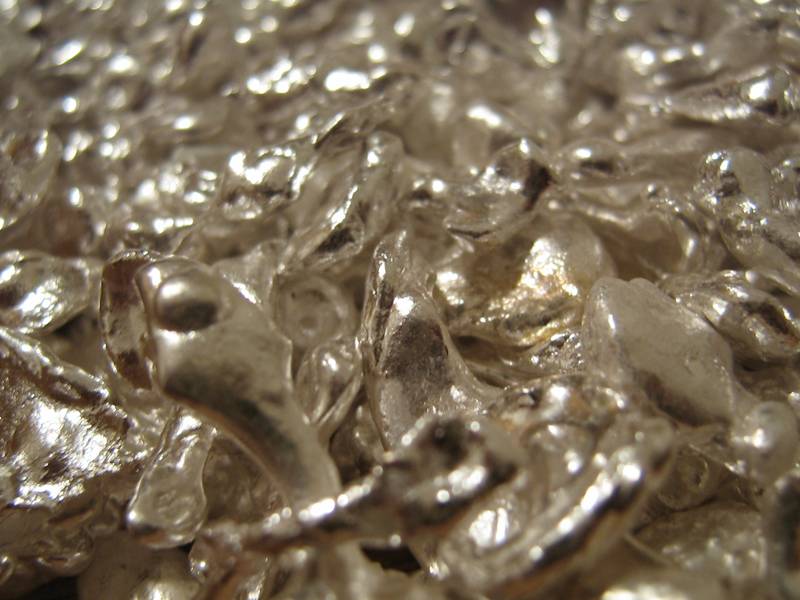Silver flakes
Silver flakes refer to thin sheets or fragments of the metallic element silver that have been produced as a byproduct during the purification and extraction processes. In this case, they originate specifically from refining operations at gold mines in Slovenia.
The process begins with ore mining where both gold and silver are present within minerals like argentite (silver sulfide) or galena (lead sulfide). The mined ores undergo crushing, grinding, and smelting to separate the precious metals from gangue rock.
During refining, a process called electrolysis is often used for silver extraction due to its high purity requirements in industrial applications. In this method, an electric current is passed through a solution containing dissolved metal compounds (usually derived from roasting or leaching the ore). This causes the precious metals like gold and silver to be deposited onto cathodes while impurities settle at the bottom as sludge known as “anode slime.”
Silver flakes are formed when these anode slimes are further processed. The solid residue is treated with various chemicals, such as cyanide or thiourea, to dissolve any remaining gold and silver compounds into a liquid solution called electrolyte. Through additional processes like precipitation using zinc dust (which selectively reduces Au+ ions), pure silver can be separated from the mixture.
After purification, the resulting fine particles of metallic silver are often in flake form due to their thin and flat shape - hence ‘silver flakes’. They may vary significantly in size but typically measure between a few microns up to several millimeters across. These small fragments have numerous industrial uses including electronics manufacturing, decorative coatings, catalyst supports, and artistic applications because of their excellent electrical conductivity, reflective properties, and malleability.
It’s worth noting that while silver flakes from Slovenian gold mines share similar production methods with those globally sourced for industrial use; they also carry a unique provenance linked to the specific geological conditions of their origin - adding value beyond just material composition alone.
